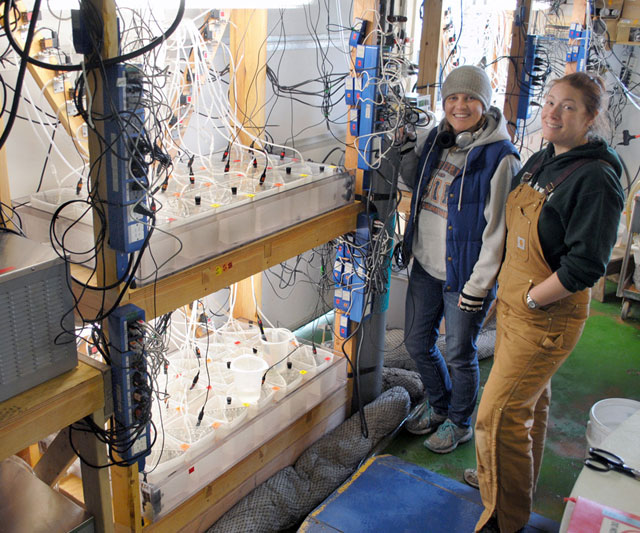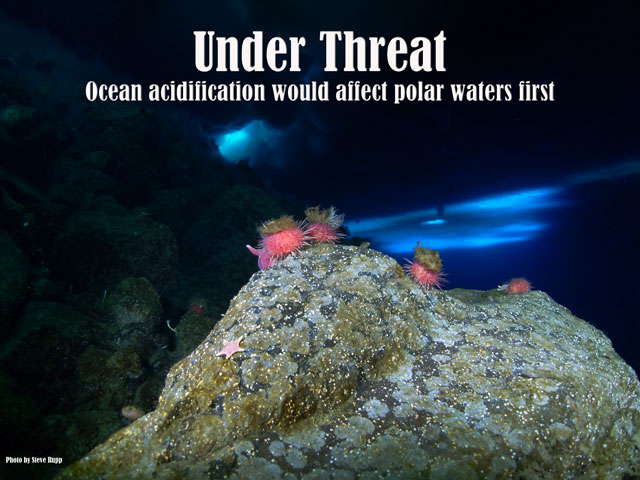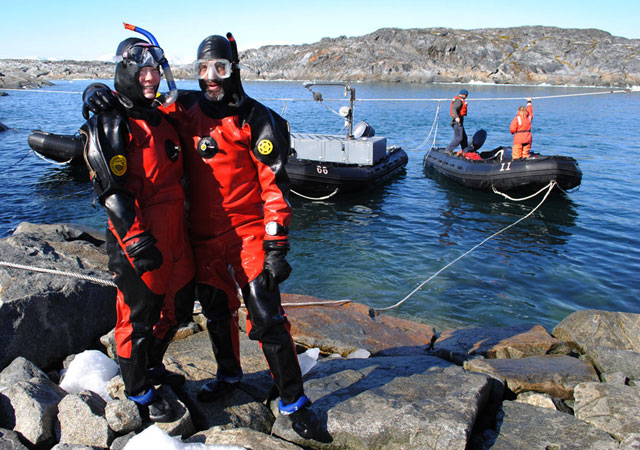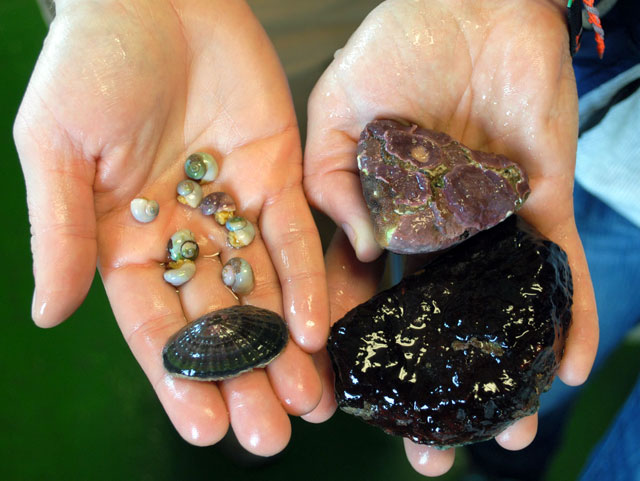Perfect stormAdd ocean acidification to the list of threats faced by the Antarctic PeninsulaPosted April 6, 2012
Add ocean acidification to the list of threats faced by the delicate marine ecosystem that exists off the western side of the Antarctic Peninsula. Already one of the fastest warming regions on the planet — where penguin colonies are blinking out of existence and hordes of king crabs are invading up the continental slope — the Antarctic Peninsula will likely be one of the first places where the effects of a more acidic ocean are first felt. “It’s sort of the perfect storm of potential impacts of a rapidly changing climate,” said Charles Amsler “We have been studying these communities now for quite a number of years, and have observed how important many of the calcifying organisms are,” he added during a phone interview from Palmer Station, the U.S. Antarctic Program’s James McClintock Ocean acidification is a problem related to the rapid increase in carbon dioxide in the atmosphere, which has jumped about 30 percent to nearly 395 parts per million in the last century. The oceans act as a sort of sink where up to a third of atmospheric CO2 drains. It’s a natural part of the carbon cycle, where the gas dissolves in seawater to form carbonic acid. Normally, that’s not a problem, but the process is happening too quickly, depleting the carbonate ions that corals, mollusks and other marine organisms need to build reefs, shells and skeletons. It’s even a bigger problem in the polar regions, where CO2 more easily dissolves in colder water. “It’s a real critical time in the picture,” said McClintock, the principal investigator on the project, which was funded as part of a broader NSF program to study ocean acidification The UAB professors, along with their colleague Bill Baker at the University of South Florida Now that mysterious world — and the unique chemicals that scientists are just now starting to exploit for use in cancer therapies or natural pesticides — could literally dissolve away. “The communities will be changing in a very unnatural way,” Amsler said. It’s not just about higher seawater acidity — a problem that will affect marine organisms around the world. The critters that live in the Southern Ocean have adapted over millions of years to a very cold and narrow temperature range, from about minus 2 degrees Celsius to about two degrees above. While the average ambient temperature, particularly during the winter months, has increased significantly in the Antarctic Peninsula over the last 60 years, ocean temperature is also on the rise. It’s crept up by about 1C. By the end of the 21st century, some predict the ocean surface waters could be 2C warmer than today, according to Amsler. “The surface waters are going to be 50 percent warmer than their entire range by the end of the century,” he noted. Amsler and McClintock, along with Maggie Amsler They had already made about 20 dives in the murky, cold waters around Anvers Island by early March to collect specimens for their lab experiments, which will look at how the organisms react to various scenarios involving higher levels of seawater temperature and changes in chemistry that lower the water’s pH, which increases its acidity. Crustose coralline algae, hard red algae that play an important role in the ecology of the peninsula marine ecosystem, deposit magnesium-containing calcite in their cell walls. The magnesium makes the algae soluble in more acidic seawater. “They’re even more vulnerable, and they cover more than 70 percent of the rocks on the seafloor here,” Amsler said. McClintock said the researchers are setting up 72 microcosms — Tupperware® containers housing two different algal species, a limpet and a small marine snail — in the station’s aquarium. About 48 of the experiments will involve pH regulation, he said. Next year, during the project’s second and final field season, the experiments will expand to include interactions among algal species and amphipods, small crustaceans that live among the seaweed communities. “The individual species investigations are important, but there’s beginning to be more of an interest in looking at ecosystem level responses to these conditions,” McClintock said. The project out of Palmer Station is one of three current ocean acidification studies in the Antarctic funded by NSF. Sean Place McClintock noted that his team is working directly with Place’s group on collecting tissue samples for the latter’s studies, and he has had conversations with Hofmann about adapting her pH sensor technology for the peninsula studies. “It’s not three independent groups that are doing things without talking to each other. We’re looking to build off each other and move the field forward in a more synergistic way by communicating,” McClintock said. Added Amsler, “This is a very rapidly evolving discipline.”
NSF-funded research in this article: James McClintock, Charles Amsler and Robert Angus, University of Alabama at Birmingham, Award No. 1041022 |



For USAP Participants |
For The Public |
For Researchers and EducatorsContact UsU.S. National Science FoundationOffice of Polar Programs Geosciences Directorate 2415 Eisenhower Avenue, Suite W7100 Alexandria, VA 22314 Sign up for the NSF Office of Polar Programs newsletter and events. Feedback Form |





